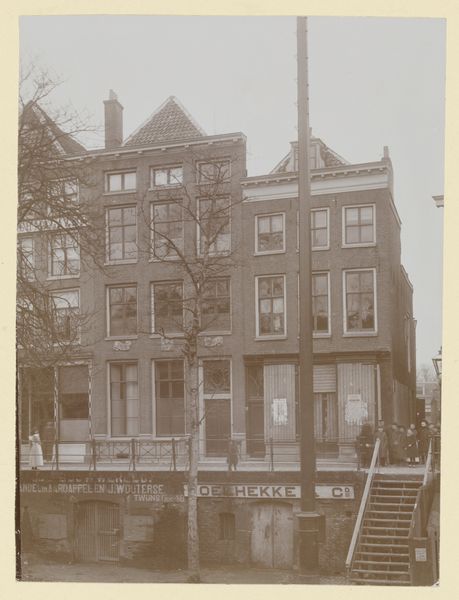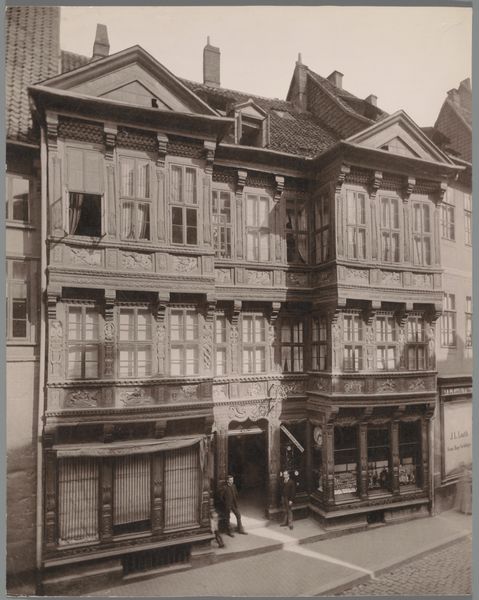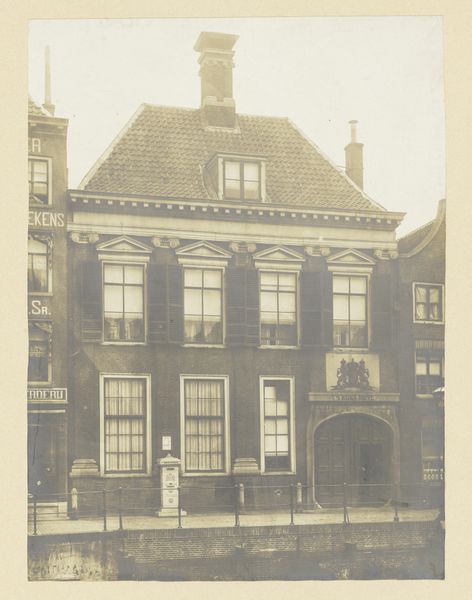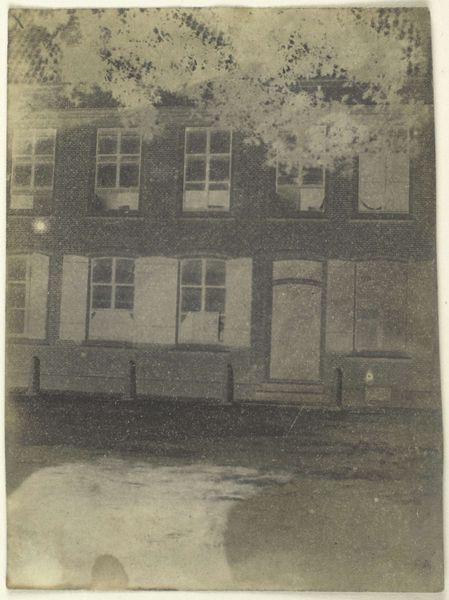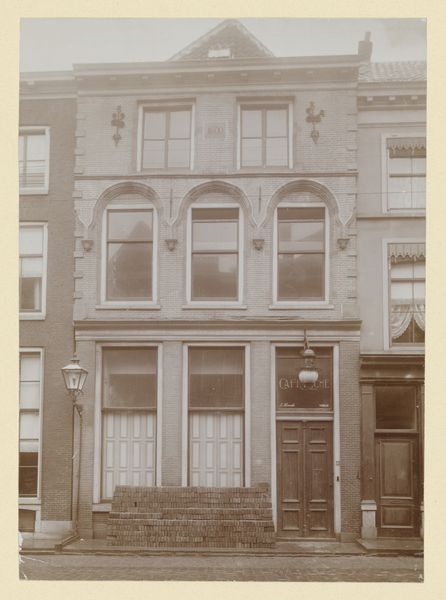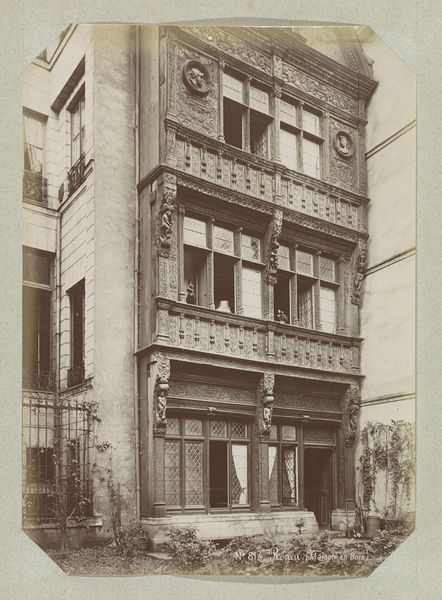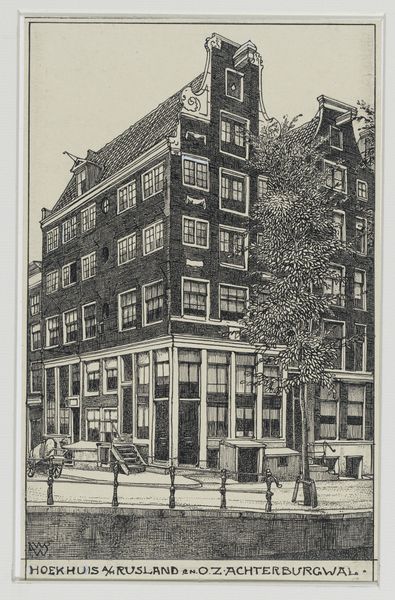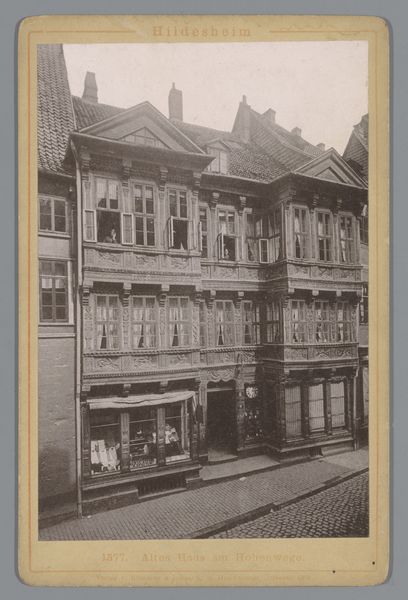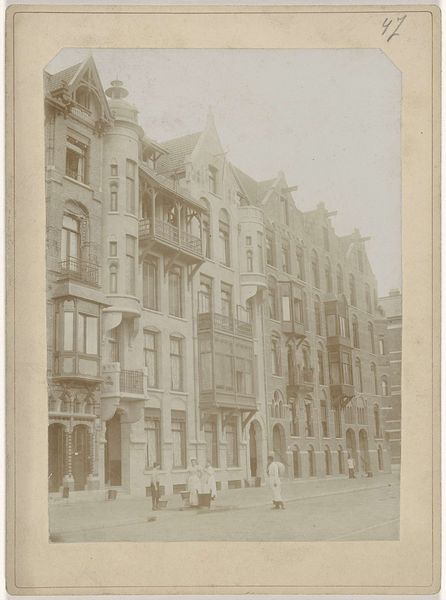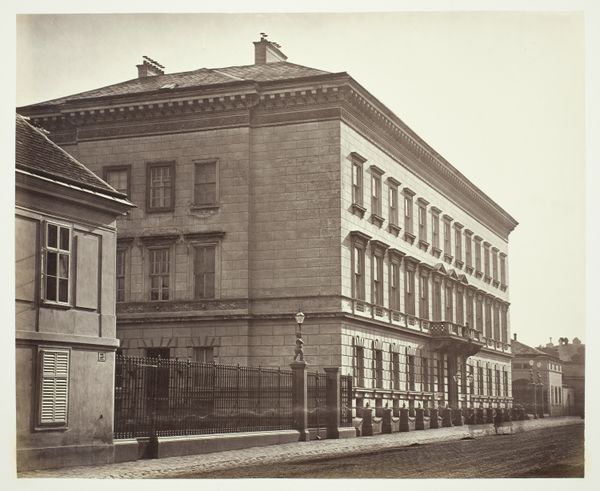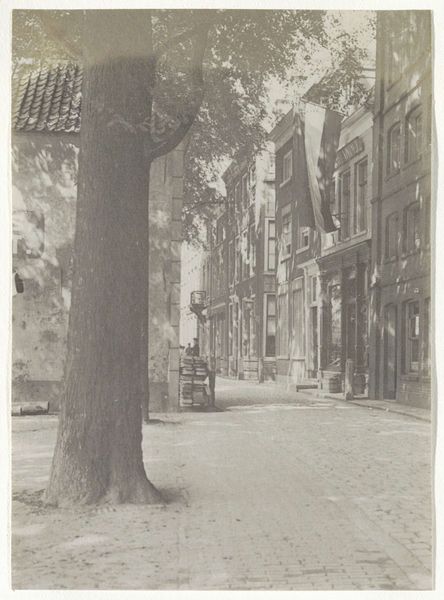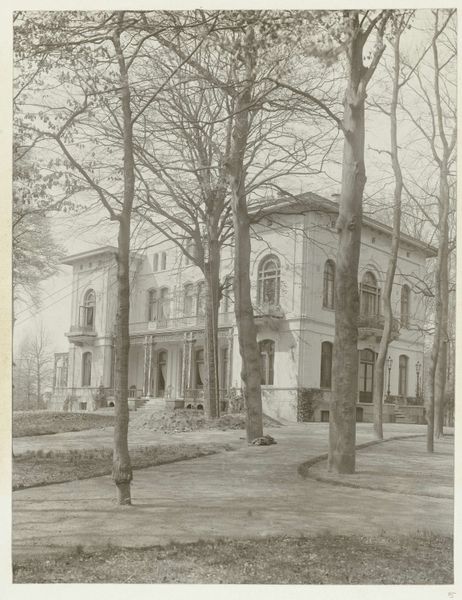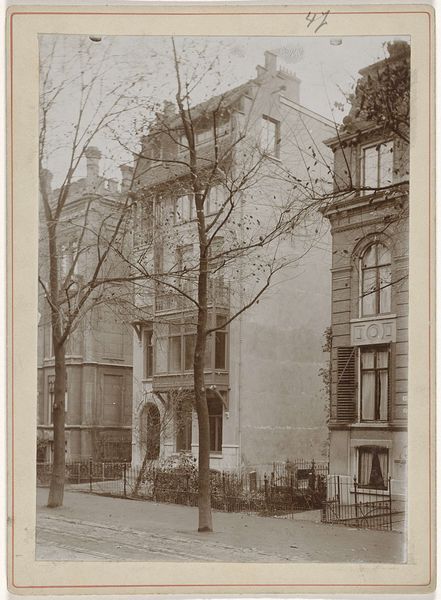
Kantoor van het Purperhoedenveem aan de Oudezijds Voorburgwal 229 naast de Agnietenkapel/Agnietenschool, Amsterdam 1890 - 1920
0:00
0:00
photography, albumen-print
#
dutch-golden-age
#
street-photography
#
photography
#
cityscape
#
albumen-print
#
realism
Dimensions: height 221 mm, width 160 mm, height 358 mm, width 297 mm
Copyright: Rijks Museum: Open Domain
Editor: Here we have a photograph from between 1890 and 1920 by Cornelis Johannes Steenbergh. It's an albumen print, depicting the "Office of the Purple Hat Veem on the Oudezijds Voorburgwal 229 next to the Agnieten Chapel/Agnieten School, Amsterdam." I'm immediately drawn to the contrasting textures – the rigid architecture versus the organic lines of the trees. What do you see as you examine the formal aspects of this piece? Curator: The albumen print offers a study in contrasts and formal tensions. Consider the strategic placement of the skeletal trees. Their stark verticality serves to both frame and partially obscure the building's facade, creating a dynamic interplay between concealment and revelation. Editor: That makes sense, they simultaneously reveal and conceal. Curator: Exactly. The light plays across the brickwork, defining its texture, whilst also creating a muted tonal range, unifying disparate architectural elements. Notice also the geometric composition: the severe rectangularity of the building offset by the rounded arches of the windows. This tension activates the surface, preventing a static reading of the photograph. How does this controlled geometry inform the sense of space and depth? Editor: Well, I noticed how the lines of the building seem to flatten the space, whereas the tree branches reaching into the frame try to pull me back in? Curator: Precisely! And what might this push and pull suggest regarding the artist's intentions or, at least, the reading that we, as semiotically informed viewers, can derive? Editor: That's a really interesting way to view the photograph. It makes me appreciate the way simple lines and composition can make something so intriguing! Curator: Indeed. It compels us to consider how Steenbergh uses formal elements to not merely record reality but also to actively shape our perception of it.
Comments
No comments
Be the first to comment and join the conversation on the ultimate creative platform.
